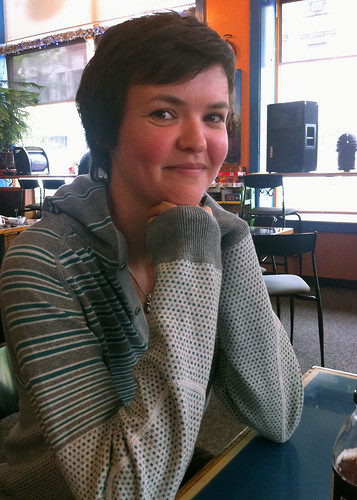Catherine Toth Fox: It’s Time To Do More Marching And Less Driving In Parades
Catherine #Catherine

There was a palpable energy in Kailua as colorful Volkswagen Beetles decorated with American flags and kilt-wearing bagpipers lined the side streets intersecting Kainalu Drive, awaiting the start of the Kailua Fourth of July parade.
This was the first time the decades-old parade was held since 2019. And it was the first Fourth of July event the Kailua Chamber of Commerce put on since the flag debacle in 2020, when members lined Kailua Road with 1,000 small American flags, sparking protest from Native Hawaiians. (Aside from being the day American colonies won their independence from Great Britain, July 4 is also the day, in 1894, when the Republic of Hawaii was declared, a few months after the overthrow of the Hawaiian monarchy.)
This year’s organizer, Asia Marie Di Antonio, a Kailua native and graduate of Kailua High, focused on making the event more culturally inclusive. The parade featured two grand marshals, including kahu Roy Brooks, who’s active in Hui Mahiai Aina, a group in Waimanalo that offers shelter, safety and food to homeless people in the area.
“That’s been our first step,” she says. “The next step is to now take the building blocks of that and reform the parade to really show respect toward the cultures of the islands and make it bigger and better every year.”
Another step — and one that I think all parades today should do — is making the event greener.
The parade route runs about a mile, from Omao Street to Kailua Intermediate School. It takes roughly 15 minutes to walk the length. To me, there’s no reason for participants — unless they can’t physically walk the distance — to ride in a fuel-burning vehicle.
Not today. Not when we’re experiencing major threats from rapid climate change, including rising global temperatures, an increase in ocean acidification and the melting of artic sea ice and glaciers. Scientists are even predicting 88% of Hanauma Bay’s sandy beach will be gone by 2030 because of sea-level rise — that’s in just seven years.

 A Marine Band marches in the Fourth of July parade in Kailua, a welcome contrast to the high number of vehicles in the parade. (Courtesy: Monica Lau Photography/2023)
A Marine Band marches in the Fourth of July parade in Kailua, a welcome contrast to the high number of vehicles in the parade. (Courtesy: Monica Lau Photography/2023)
One of the main causes of climate change is the burning of fossil fuels — exactly what most cars and trucks use to run. According to a 2022 report by the nonpartisan Congressional Budget Office, transportation is the largest source of greenhouse gas emissions in the U.S., and most emissions in this sector — 84% — come from cars and trucks.
And yet, Tuesday’s parade had about 230 vehicles, according to event organizers, from golf carts to big semitrucks. Yes, 230 vehicles. It was like sitting on the sidewalk and watching traffic go by.
The inclusion of cars and trucks — which often are decorated or pull floats — has long been the tradition of parades, harking back to the mid-1800s when floats began to appear in parades. The Rose Parade, which has been presented by Honda since 2011, has more than 45 floats pulled by gasoline-powered vehicles. These floats, powered by V-8 engines, burned through about 800 gallons of gasoline by the time they finished the 5.5-mile route, according to a Los Angeles Times article in 2010. In addition, 80 auxiliary trucks, 145 fleet cards and a dozen law enforcement vehicles participated.
The Kailua parade came on the heels of Gov. Josh Green — who walked the mile-long route on Tuesday — signing several bills into law that would help fight climate change and work toward the state’s zero-emission goal of 100% clean energy by 2045. One of those bills is SB 1025 (Act 226), which establishes long-term goals and implements strategies that will help — and ultimately eliminate — greenhouse gas emissions from Hawaii’s transportation sectors.
An easy solution would be to limit the number of vehicles in local parades. Di Antonio is even thinking about adding a sustainability category for parade floats next year to incentivize participants to think green.
Di Antonio, who runs Kailua-based KidzArt and Club Scientific Hawaii, held a weeklong parade workshop for kids to build a float, from concept to creation. They came up with the theme of rainbow eucalyptus, known for its unique rainbow-hued bark. Di Antonio decided to match whatever donations she received for the float and use the funds to buy and plant trees — a cause the kids chose. They raised $300 in donations. Everything on the float, even the balloons and chicken wire, was reused in some way.
“To be honest … I don’t think we need any more cars (in the parade),” Di Antonio says.
Of course, there are exceptions. Some veterans — who were honored by the parade — have trouble walking the length of the route. And the kids always love seeing the city’s fire trucks and other emergency vehicles go by.
But cutting down on the number of vehicles shouldn’t be hard. Some of our favorite participants were the bagpipers, the horses, the Kukui High School marching band, a group of martial art students, a team of cheerleaders and flag football players, and the festive skaters from Roller Skate Oahu.
Fewer vehicles would slow down the parade, too, giving spectators — an estimated 10,000 people lined Kainalu Drive on Tuesday — something more interesting to watch than cars driving by.
Seems like a win-win to me.
Civil Beat’s coverage of climate change is supported by the Environmental Funders Group of the Hawaii Community Foundation, Marisla Fund of the Hawaii Community Foundation and the Frost Family Foundation.
Sign Up
Sorry. That’s an invalid e-mail.
Thanks! We’ll send you a confirmation e-mail shortly.